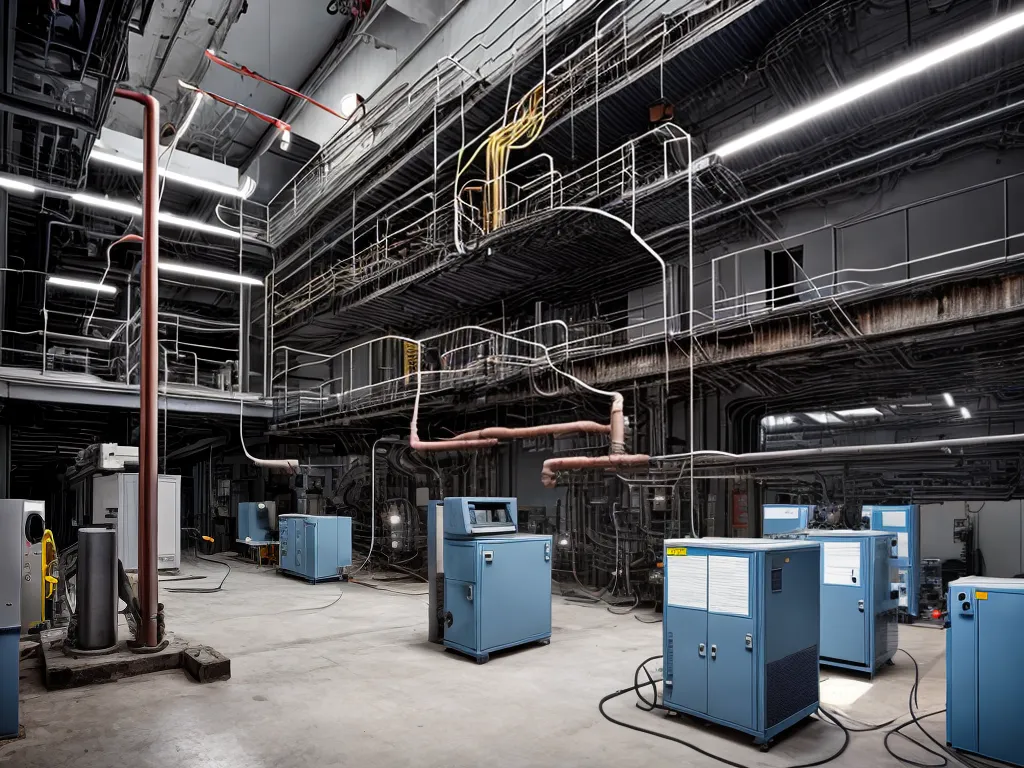
Updating Obsolete Electrical Systems in Industrial Settings
Introduction
Upgrading electrical systems in industrial facilities is crucial for optimizing operations, improving safety, and staying compliant with changing codes and regulations. However, these upgrades often require significant investments of time and money. As the facility manager responsible for maintaining my plant's electrical systems, I want to walk through the key considerations when embarking on these important projects.
Assessing the Current Electrical System
Before proposing any upgrades, it's important to thoroughly evaluate the current electrical system. Here are some of the key steps I take:
-
Conduct visual inspections to identify any obsolete equipment, frayed wiring, or other safety hazards. I take photos and notes to document any issues.
-
Review technical specifications and maintenance records for major electrical components like switchgear, transformers, and generators. This helps identify equipment nearing the end of its service life.
-
Load testing to ensure electrical systems can still handle current power demands. I bring in technicians to meter power at different locations.
-
Check that existing wiring and circuits meet current local and national electrical codes. Non-compliant issues must be updated.
-
Consult with operations teams to identify any production bottlenecks caused by electrical constraints. This helps prioritize upgrades.
Planning Electrical Upgrades
Once I've completed a full assessment, I work with electrical contractors and engineers to plan system upgrades. Key aspects of this process include:
Prioritizing Updates
-
Life safety issues - Any risks to personnel are top priority.
-
Code compliance - Bringing wiring and equipment up to the latest NEC standards.
-
Capacity increases - Adding capacity for new production equipment.
-
Efficiency gains - Upgrading transformers, lighting, motors for energy savings.
Budgeting and Cost Analysis
-
Get multiple contractor estimates for large projects.
-
Calculate payback period for upgrades focused on efficiency.
-
Take advantage of any utility rebates or tax incentives.
-
Plan work during scheduled shutdowns to minimize production impacts.
Execution Strategy and Scheduling
-
Schedule complex projects in phases to limit downtime.
-
Use spare capacity in redundant systems to keep operating during upgrades.
-
Perform testing of new systems before the old systems are removed.
Key Electrical Upgrades to Consider
Based on my past experience, here are some of the most impactful electrical upgrades for industrial facilities:
Switchgear
Upgrading older switchgear improves safety and allows reconfiguration for changes in load distribution. New microprocessor-based trip units provide better protection.
Transformers
Replacing obsolete transformers increases capacity and efficiency. TP-1 insulating fluid eliminates fire safety risks compared to older mineral oil-filled units.
Busway
Installing enclosed busway instead of cable helps organize distribution runs and allows quick changes to electrical circuits.
Lighting
LED fixtures greatly improve light quality and significantly reduce energy consumption compared to older fluorescent or HID lighting.
Motors
NEMA Premium high-efficiency motors can save thousands of dollars annually in energy costs compared to older standard motors.
Backup Power
Modern diesel or natural gas backup generators and UPS systems help maintain uptime during utility outages.
Executing a Successful Electrical Upgrade Project
Based on past project experience, here are some keys to completing a complex electrical modernization initiative:
-
Maintain regular communication between all parties - contractors, engineers, and internal team members.
-
Establish a clear change order process to avoid cost overruns.
-
Verify that contractors follow all safety procedures and protocols.
-
Perform thorough testing before energizing upgraded equipment and circuits.
-
Provide adequate training and documentation to staff on the new electrical systems.
-
Confirm that updated systems meet all applicable electrical codes and standards.
Conclusion
While upgrading electrical infrastructure requires substantial investment, the long-term benefits for safety, reliability, efficiency, and compliance make the effort worthwhile. By taking a strategic approach and collaborating with qualified partners, facility managers can successfully execute these critical industrial projects. With proper planning and execution, the electrical modernization process can position manufacturing plants for continued success.